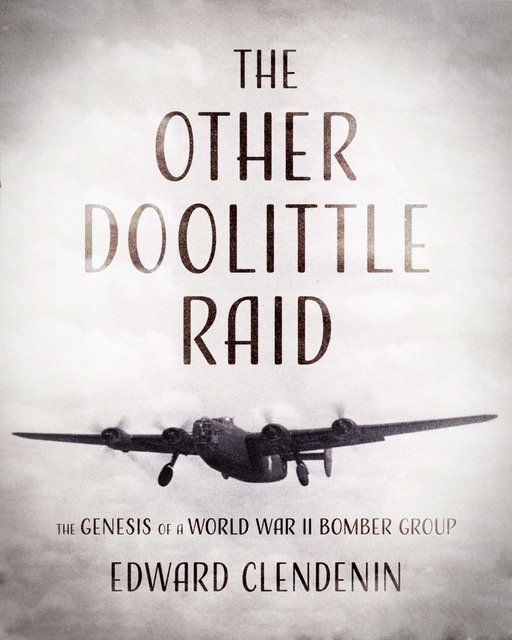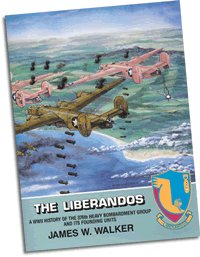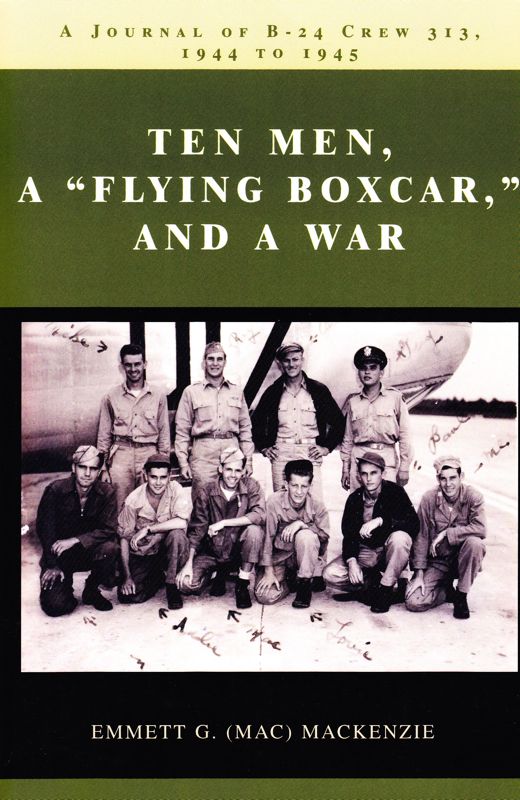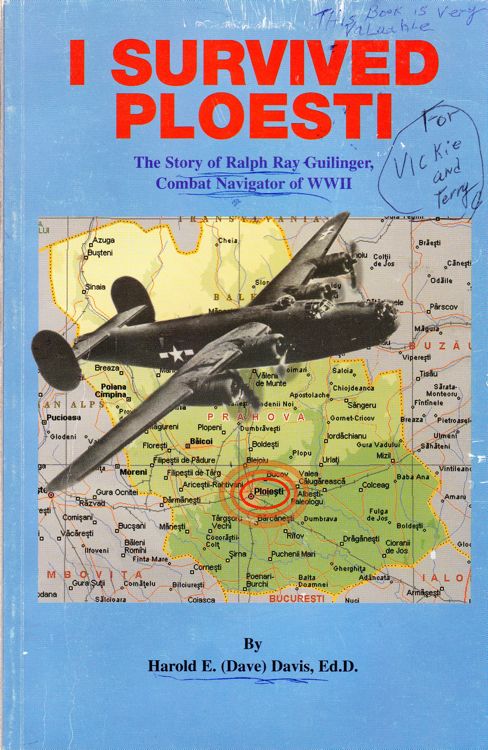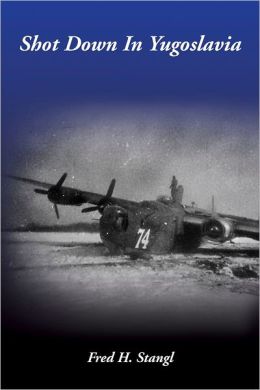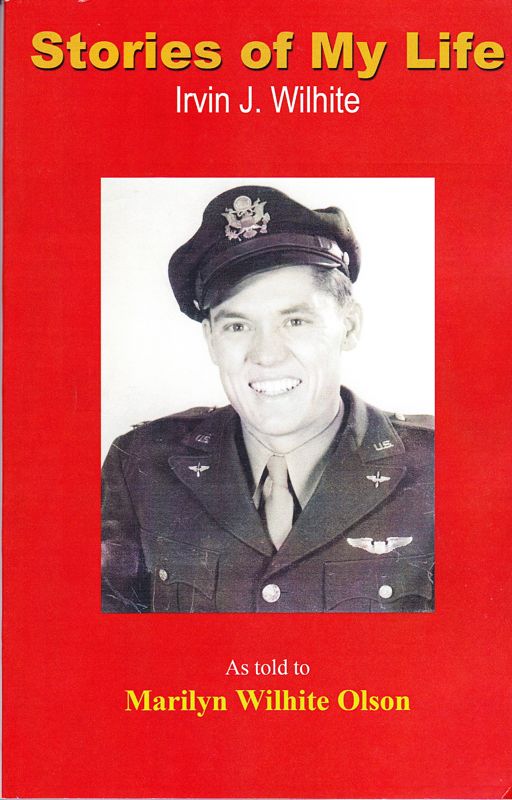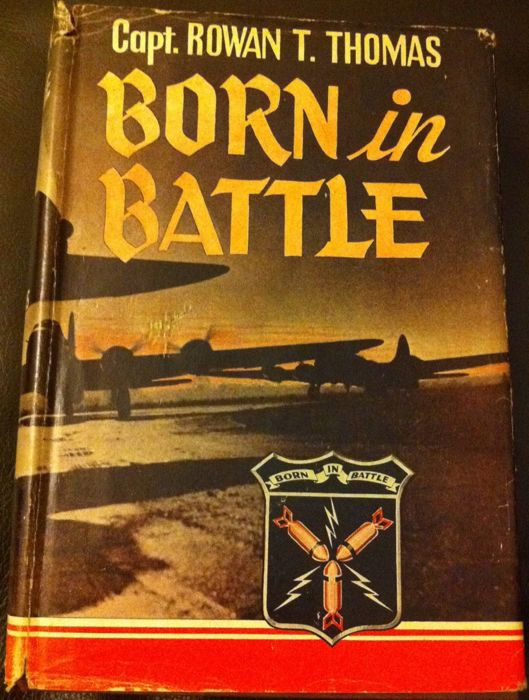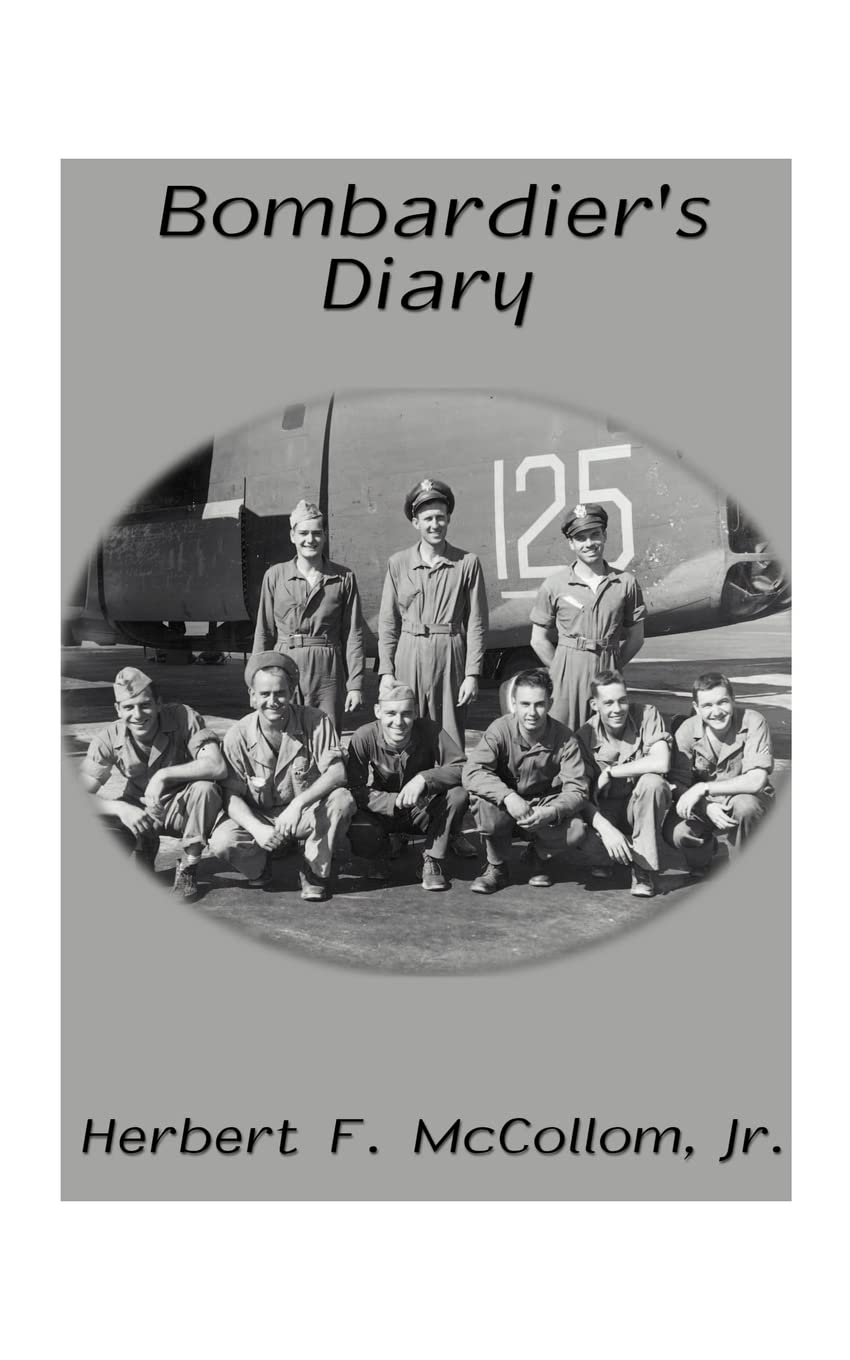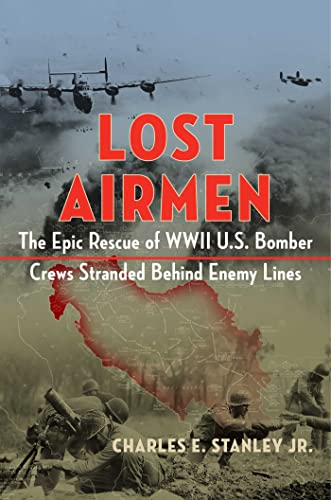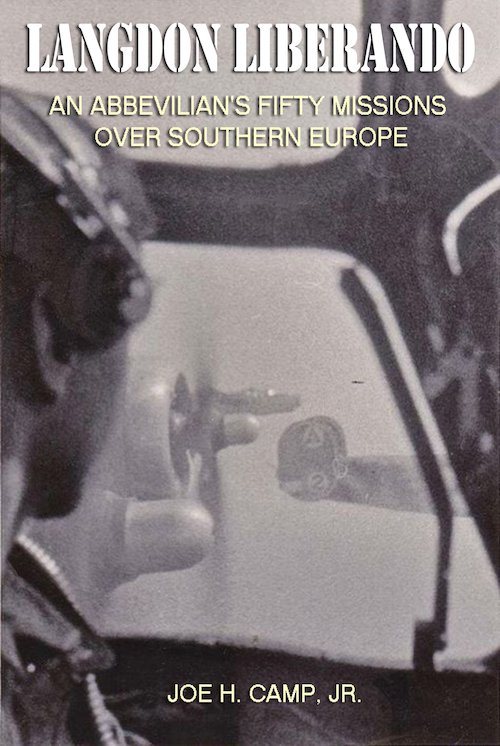Phillip R. Scott, Mission January 9, 1945
To review the case, in general, I was first-pilot of a B24 bomber attached to the 512th Squadron, 376th Bomb Group (H). and was taking part in a mission to the North M/Y at Linz, Austria. While the original plan of this mission seemed satisfactory, unforeseen weather conditions forced our group to ascend 5000 feet higher than was planned, and as a consequence, oxygen supplies became alarmingly low by the time the target was reached. Added to this was the anxiety brought about by the heavy undercast cloud conditions that prevailed, and crew members were very nervous about having to maintain close formation through cloud masses while enroute to the target. This mission was accompanied by an unusual amount of pro-target physical and mental discomfort (due to low temperatures, icing conditions, etc.), and the crew members were probably “worn out” even before real trouble came along.
While on the bomb-run (at 28,000 feet) our plane suffered flak damage and No. 1 engine required immediate feathering (loss of oil). However, bombs were dropped successfully and departure from the target area was without further incident. At this time I was maintaining formation with three other planes of my squadron, one of which was equipped with radar navigational aids, and we were descending gradually on a heading of about 180o. During this period every possible item of equipment was detached from the plane and jettisoned overboard in order to lighten the plane as much as possible. After crossing into Yugoslavia, I called the radar ship for a position fix and was informed that we were some 30 miles east of Trieste.
Very soon afterward our no. 2 engine began to falter (manifold pressure dropped to 10-12 inches) and from then on it was difficult to maintain directional control. Our altitude at this time was about 9000 feet, and we entered the undercast at 8000 feet. The next one hour of flight was conducted under instrument conditions, and for this reason it vas necessary to keep the no. 2 engine turning over in order to maintain operation of the blind-flying instruments when we broke out of the clouds at about 2000 feet on a heading which would eventually take us to the island of Vis, we were in a serious position regarding our gasoline supply. It was the engineer's opinion that we had developed a leak in the fuel system. In a short while our island came into view ahead and it appeared that we might reach our goal.
In the meanwhile, preparations for “ditching” were being made. Previously, I attempted to make radio contact with the other planes of our squadron, but without success. The radio operator was attempting to contact radio direction finding stations, and the co-pilot was engaged in making radio contact as well. Apparently, all efforts at communication failed.
Our fuel supply was finally exhausted and I brought the plane in to a dead-stick landing about 15 miles from the island of Vis. There was no time to alter the course of the plane and I simply maintained my existing direction and a safe minimum speed (with wheels up and flaps full down). Seconds before the impact I leveled out the flight path of the plane and we hit the water at about 110 I.A.S. I judged the wind to be 25-30 mph from the left-rear quarter, and the sea was rough with whitecaps and blowing spray. All crewmen were at their assigned ditching stations: three men were positioned behind the co-pilot’s seat, two men were behind the pilot’s seat, and four men were located on the floor of the waist section near the lower ball turret, making a total of eleven men (including pilot and copilot).
My own version of the actual ditching is as follows:
During our glide toward the water I succeeded in disconnecting my headphones and throat-mike, and even removed all safety straps fixing me in the scat (I guess I acted on impulse in my desire to set up conditions favorable for quick escape). Almost at once after striking the sea I felt the rush of water and it seemed as though I was completely submerged in a matter of seconds. After an unknown time elapsed I found myself clear of the plane and floating some 5-10 yards ahead of the remains of the plane. The airplane was inclined at 60°-70° to the horizontal, with a little of the wing still visible, and the whole tail and waist section was gone. All other men were in the vicinity of the wreckage, except one man who I saw briefly at least one-hundred yards astern. He disappeared some minutes later, and I was told that he was the tail gunner. The plane remained afloat perhaps one minute, and all that remained on the surface afterwards was an oxygen bottle or two, the nose wheel, and a "package" affair which turned out to be our spare life raft. Before the plane sank, the engineer succeeded in opening up one of the pair of life raft hatches (the other one was jammed shut) and the raft popped out, inflated itself, and was cut loose.
Before the crash, I had not been able to shed my parachute harness because I could not afford the use of two hands. Later, when I inflated my Mae West life preserver (without thinking) I nearly suffocated because of the pressure induced upon my chest. Through the assistance of the Navigator, I unfastened the harness and slipped it off. I also kicked off my heavy flying boots and hung on to the inflated raft for some time, perhaps an hour.
In the meanwhile, others had opened out the extra raft, and found that it would not inflate automatically; but fortunately they were able to inflate it with a hand pump found in the equipment of the “good” raft. The next hour (or so it seemed) was spent in getting all eight survivors into the two 5-man rafts, with four men in each one. By this time it was growing dark and the sea continued rough and the sky remained solid with clouds.
Once in the rafts we checked each other for the extent of our injuries and found that one of us (the assistant engineer, in my raft) was in serious condition. He obviously had suffered a severe hand injury and was not coherent in his speech or actions. This man did not survive the night and was buried at sea the following morning. I did not learn in any detail of the other injuries suffered by the crewmen. I did notice that the Navigator had a badly injured forehead and had compound fractures of the hand. Two others had serious leg injuries. As for myself, I was not aware of any wounds at the time -- I was simply exhausted and in bad shape from too much intake of seawater.
A little while after boarding our raft, we noticed that it was becoming deflated. We searched in vain for the leak. It was a raft of early design (R.H. and L.H. sections) and a very awkward and dangerous condition developed when we found that one side could not be kept inflated. When it seemed that the raft might flounder, one man was transferred to the other raft -- with great difficulty. For additional safety, I tied the rafts together, broadside, so as to support the bad side of our raft. I used my necktie to do this
I do not recall any particular event during that first night on board, except that it does not seem now that any of us could have slept; it was too risky, with the waves tending to either up set the boats or wrench them apart. The next day was spent pretty much in silence following the burial ceremony, and we just waited -- waiting for some thing, anything. Nothing was sighted, to my knowledge. We found that one raft contained very little equipment while the other was fairly well stocked with emergency rations and water. I personally consumed very little as I was sick almost constantly.
My recollection of our second night on board the rafts is even more vague than the first. By next morning, however, I had a feeling that I could not endure another night. Since it was early January, the temperature of both sea and air was low, -- how low I don’t know. I do know, however, that I shook rather violently during my entire stay in the raft. (I learned later that I lost 20 lbs. in that period, but that the "shakes" probably saved my life.)
It was sometime during the morning of our third day at sea that I was aware that someone had sighted a boat of some sort a few miles distant. Incidentally, when we had gone down we were close enough to “our island" to distinguish trees fairly well. At the time of sighting the ship there was no land in sight in any direction. (OH, we learned early that it was futile to attempt to maneuver our rafts in any desired direction; and so we drifted with the currents and winds.) When the boat was some two miles distant, I observed it to turn about in our direction, in recognition of our flare signals, I was overwhelmed with relief and at once lost consciousness. I recall awaking once while on board the ship and later on when hospitalized at a British First Aid Station on the island of Vis. I was subsequently flown back to an Air Force hospital in Italy where I recovered from my ordeal within six weeks. Three others were not as fortunate as I for they were hospitalized for an average of one year each. The other three survivors, besides myself, were back to duty within one month.
Getting back to the ditching scene, I can only surmise what happened to the plane and myself. First of all, the B24 was not well adapted to water landings. I am not sure how well executed my attempted landing was, but of this I am sure: The impact must have collapsed the bomb bay doors and the exposed bulkheads took the full force of the water thus causing the fuselage to be torn in half. The men who occupied the art ditching station were obviously in a very vulnerable position, but it was the only one available to them.
The loss of life to those on the flight deck can be attributed in part at least to the presence of the top turret. I learned that the water that entered through the nose of the plane somehow uprooted the co-pilot's seat and threw it rearward. The three men who were seated behind it were thrown wildly into the turret. The first man in line simply disappeared; the second died of his injuries, and the third suffered a fractured forehead and a badly broken hand, the one used to shield himself. In my own case, I have always felt that it was a wise move on my part to rid myself of the straps which held me fast to the seat. How I actually came clear of the wreck I don’t know, but the lack of fastenings probably helped, in my case at least.
It was disappointing to have one of the regular life rafts become jammed; on the other hand, the extra raft was truly a life saver. It was pure luck that we recovered it however. The fact that the raft equipment was obsolete and short of rations was terrible. (The leak found in one of them was no doubt caused by the crash.) Never-the-less, any rubber raft of the type we had avai1able is without question a very valuable item to have aboard any aircraft. Not only should all operational aircraft be provided with the most up-to-date ditching equipment, but such equipment should be inspected regularly and maintained in first-class condition.
The next item of importance on this subject is the training given to all aircrew personnel. They should be thoroughly acquainted with all equipment available to them in the particular aircraft they are to operate. Of equal importance is the proficiency of each crew member in the use or intended function of this equipment. Regular ditching drills should be mandatory, especially at overseas air bases. And last but not least, every man should be exposed to a wide variety of true accountings of actual ditchings. This latter phase of" training is the one that I believe is likely to be omitted. At least it was in my training some eight years ago. For instance, no one ever told me that the old B24 was almost sure to be ripped in half on ditching, regardless of the conditions of the sea. The great weak point in this plane was its relatively fragile bomb-bay door construction. Also, from our experience it is apparent that the fastenings which secured the (armored) seats to the flight deck should have been built much stronger to resist failure during crash landings. Mens' lives depend upon this. If any airplane shows any tendency to break in to two sections when ditching; (For example the B24) all ditching Stations should be located well forward of the plane of failure.
I am aware of the eventual improvement of the B24 regarding this, the relocation of the "aft position" to the compartment over the wing, but this change came too late to be of any benefit to us. Any such auxiliary compartment should be provided with its own escape hatch, however, and include suitable barriers to prevent men from being thrown out in any direction.


The website 376bg.org is NOT our site nor is it our endowment fund.
At the 2017 reunion, the board approved the donation of our archives to the Briscoe Center for American History, located on the University of Texas - Austin campus.
Also, the board approved a $5,000 donation to add to Ed Clendenin's $20,000 donation in the memory of his father. Together, these funds begin an endowment for the preservation of the 376 archives.
Donate directly to the 376 Endowment
To read about other endowment donation options, click here.
Reunion
NOTE change in month !!!
DATES: Oct 26-29, 2023
CITY:Tucson, AZ
HOTEL: Double Tree Suites Airport hotel
7051 South Tucson Blvd., Tucson, AZ 85756
520-225-0800
Click here to read about the reunion details.
